
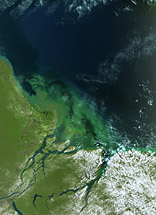
Amazon Delta,
Northern Brazil
01. October 2005,
orbit: 18758
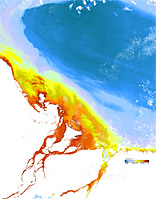
Yellow substance absorption coefficient
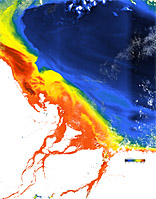
Chlorophyll concentration
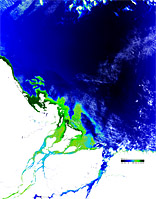
Atmospheric path radiance in band 2
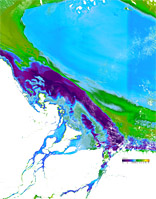
Quality measure of the inversion procedure (chi square)
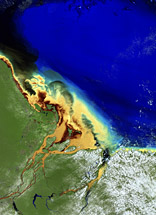
Composition L1 RGB and
L2 RGB (bands 6-5-2)
Click on the small images above to get the full resolution image (appr. 5÷6MB)

